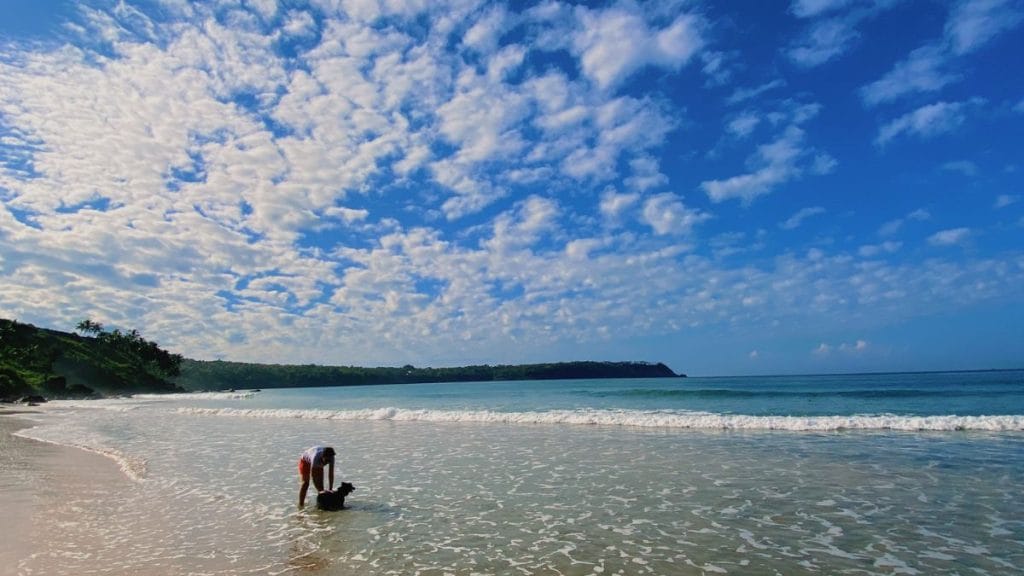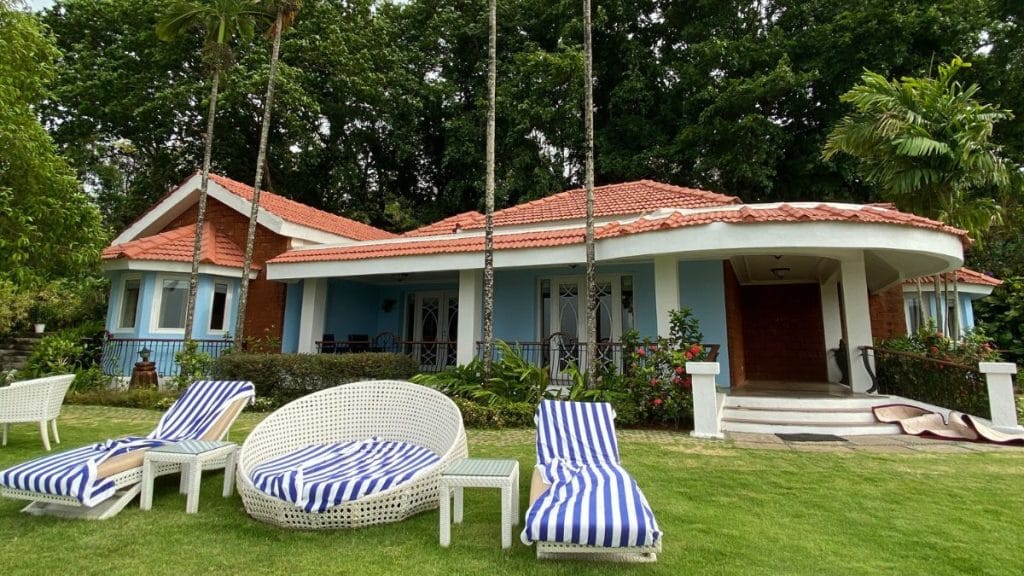Goa: As the curtains fall on 2024, Goa finds itself caught between two competing images. On New Year’s Eve in 2021, thousands of revellers packed into Baga Beach during the Omicron wave sparking both alarm and awe. It was a symbol of India’s desire for “revenge travel”. Three years later, social media feeds are cause for a different kind of alarm and awe.
Over the last few weeks, photos and videos of empty cafes and deserted lanes in Goa, during what should have been peak tourist season have been circulating online, reigniting the debate over whether Goa is well and truly dead as a tourist destination. Fights have broken out in the comments sections. While domestic tourists compile a laundry list of complaints against the state, ranging from prohibitive flight and hotel costs, expensive food, and the “taxi mafia”, the state’s residents launch into their own complaints against uncouth tourists.
To the surprise of no one, official statements chose to fight fire with fire. “I welcome people from the entire country to Goa,” said Chief Minister Pramod Sawant on 31 December. “The months of November, December and January in Goa are going to be filled with tourists. All the hotels here are full, and I believe all flights to Goa have been booked.” Sawant went on to slam influencers for spreading the “wrong message”.

Influencers are public enemy number one, according to the Goa government. Tourism Minister Rohan Khaunte—who last month filed a complaint against X user Ramanuj Mukherjee for his claims about the decline in Goa’s tourist numbers—also lashed out against “paid influencers” and suggested that he didn’t want Goa to turn into Thailand. He did, however, admit that tourists visiting Goa faced some issues with connectivity. “I am not justifying the issues, but at the same time, we need to ensure that a wrong message is not created by someone. Let us amplify the right issues. Let us not disturb Goa with smaller issues when it is a tourism destination,” he said.
Behind this cycle of accusation and counter-accusation lies the uncomfortable truth that perhaps both sides are simultaneously right and wrong. Goa’s story has always resisted simple narratives. Beyond the social media debates and government reassurances lies a much more complex reality: Of a destination in the middle of profound transformation. This isn’t just about counting tourists or measuring hotel occupancy. It’s about how a place reimagines itself when the very nature of travel changes. What appears as a decline to some and growth to others might simply be the growing pains of a destination learning to redefine itself.
Also read: The real problem to Goa tourism isn’t from social media. Sea view homes are killing mangroves
From psytrance to minibus tourists
Goa’s relationship with tourism began in the sun-drenched 1960s when British and Russian travellers first discovered its shores. What started as a hippie haven, birthplace of psychedelic trance music and barefoot revelry, transformed through the decades into something entirely different. Through the 1990s, when alcohol was heavily taxed across India, Goa’s sunset beers and shacks became young India’s first taste of freedom. As alcohol prices began to equalise and our purchasing power turned its attention to Southeast Asian shores, the state found itself at a crossroads.
Then came the pandemic, rewriting every rule of travel. Almost overnight, Goa transformed into a refuge for urban professionals who arrived en masse, and turned holiday homes into primary residences. Real estate prices soared, new restaurants opened their doors, and accomplished chefs arrived. It seemed, for a moment, like a bit of a renaissance.
Yet as the world settled into its new rhythms, the fault lines began to show. Now, the answer to whether Goa’s tourism is dying out depends entirely on who you speak to and where they are. A cafe owner in North Goa, who didn’t wish to be named, told me that tourists from Russia, Ukraine, and Israel who made up the bulk of his business, have dried up for obvious reasons. And the ones that show up at his restaurant are not interested in paying a premium for his food. “All they ask me is, ‘Where can I find bikini babes?’ or ‘Where can I find drugs?’ or ‘Do I need to wear a helmet here?’. I try to educate them, but the reality is, if our laws are not enforced, why blame the tourists,” he said.
The cafe owner pointed at the mushrooming of unauthorised homestays and non-commercial vehicles being rented out as an example of lawlessness. He suggested that the only kind of tourist that Goa seems to be attracting, is the kind that wishes to cut corners everywhere. “I see only young people who buy their alcohol from wine shops, sit and drink in their shared rooms, and eat Maggi for four straight days,” he said.
In Goa, this sentiment is echoed in several unkind private conversations berating the “minibus tourist”—code for the lower-middle-class—who come to Goa for a dip on the beach and cook their “food by the roadside”, but don’t “contribute to the economy” of the state.
Also read: Serendipity Arts Festival is inviting Panaji, its people to co-author a new cultural chronicle
Not a place for cheap booze
These tensions reveal a deeper dissonance in Goa’s evolving identity. An Airbnb owner in North Goa, who also wished to remain anonymous, suggested looking beyond the surface narrative of declining numbers. “When people talk about declining tourism, I always ask, ‘Compared to when?’,” he said. According to him, the pandemic dramatically reshaped Goa’s hospitality landscape. What began as a #GoaLife movement created ripples that continue to transform the coastline. Many who bought or rented properties thinking they would permanently escape city life are now letting out these spaces, flooding the market with short-term rentals. “The rate at which supply has increased doesn’t match the change in demand,” he said.

Still, this oversaturation tells only part of the story. Even as some restaurants report empty tables, the state continues to attract some of India’s most celebrated restaurateurs. Several Goan establishments routinely make the best restaurants in India lists. “People often complain that the food in these restaurants is now just as expensive as Delhi or Mumbai. But why should it not be? If Goa is no longer considered a place where you get cheap booze, cheap food, and cheap entertainment, I’d say that’s good,” said the Airbnb owner.
Darnish Singh Kalra, an F&B industry expert who ran a restaurant in South Goa in 2014, traces this evolution through an even longer arc. He remembers New Year’s Eve of 2016, just months after demonetisation, when Goa’s streets emptied of their usual revelry. Even then, Kalra said, the infrastructure wasn’t really ready to cater to premium tourism. Now, as Southeast Asian destinations craft deliberate tourism policies—Thailand’s visa-free welcome, Bhutan’s rebranding as a sustainability haven— Kalra sees potential for Goa to reinvent itself as a luxury destination. But that transformation, he suggested, requires more than just market forces: it needs a government willing to address fundamental issues of infrastructure, accessibility, and identity.
Perhaps what we’re witnessing isn’t so much the death of Goa’s tourism—it’s the end of a particular dream of Goa, steeped in nostalgia. The true measure of the state’s future might not lie in tourist numbers or hotel occupancy, but in how it navigates this delicate moment of transformation. Can it find a way to welcome those who seek its shores, while protecting what made it worth seeking in the first place? Can it craft an identity that serves both its residents and its visitors?
(Edited by Theres Sudeep)







correct it!! Britishers did not find goa.. dakkan sea shore is their they just use this as a sun bath facility!!
Goa tourism is changing or India tourism is changing? Not deliberately or in a planned manner. GST, toll taxes and Adani surcharges have multiplied travel costs. Foreign destinations have become equally valuable, plus, they offer better roads and cleaner air.
ph madam ji tusi rehne do likhna. last time likha tha, diljeet modi ko challenge kar raha hai. agle din modi se jaffiyan pa ke aa gya diljeet. wella time waste kar diya sabka
Well deserved. Goa is riddled with over expensive hotels , poor infrastructure, cab mafia, drugs underculture, police wasooli, arrogance all round, dirty waters. For the same price , even srilanka offers better experience , why go to Goa .. hype hai pura and if they don’t want 80% of India which is mini bus crowd and maggi eating, then they will suffer more . Koi krabi ya sentosa nahi banega aur bana toh bhi foreign ka charm hai if at the same cost. Get real.
Other coastal regions of India are gaining popularity. Places like the Andaman and Lakshadweep are getting more attractive, thanks to the Mali administration. India is a vast country with vivid attractions.
Wow, what was Ms. Kaur smoking, something local from Goa?
so delusional, Goa is riddled with scams, rude shack owners, it’s a far cry from luxury and will never be the same.
Foreign tourists from Israel, Ukraine and Russia have certainly declined due to the war, but the psytrance scene in Goa itself seems to have diminished following the BJPs victory. It does feel a little sad, but it also seems that Goa grew up around the same time I did.
Exactly this is great lesson for Goa’ s dirty supremacy culture wiz cheating, extortion, and local mafia’s cowardnes on its own country tourist and In country people specially who visited from lower south indian citizen. This is a great TIT For TAT situation for Goa’s tourism and it’s monarchy. Yes now around the world came across the ugly place and it’s companies who is treating the Indian tourists. No more glitters of Goa, there are lots and many beautiful places in India and neighbouring countries like Malasia, Thailand, Singapore and Srilanka those beautiful nature and well maintained tourism culture.
Can Ms. Karanjeet Kaur ever get over her obsession with Goa and Sikhs?
An analysis of her articles on The Print clearly shows that she is consumed by these two facets of her existence and identity. And it’s an unhealthy obsession as it excludes everything else.
Can she ever write on anything which has nothing to do with Goa and Sikhs?
Also, her love and admiration for Khalistanis comes across quite clearly. Hope Mr. Shekhar Gupta notices that.